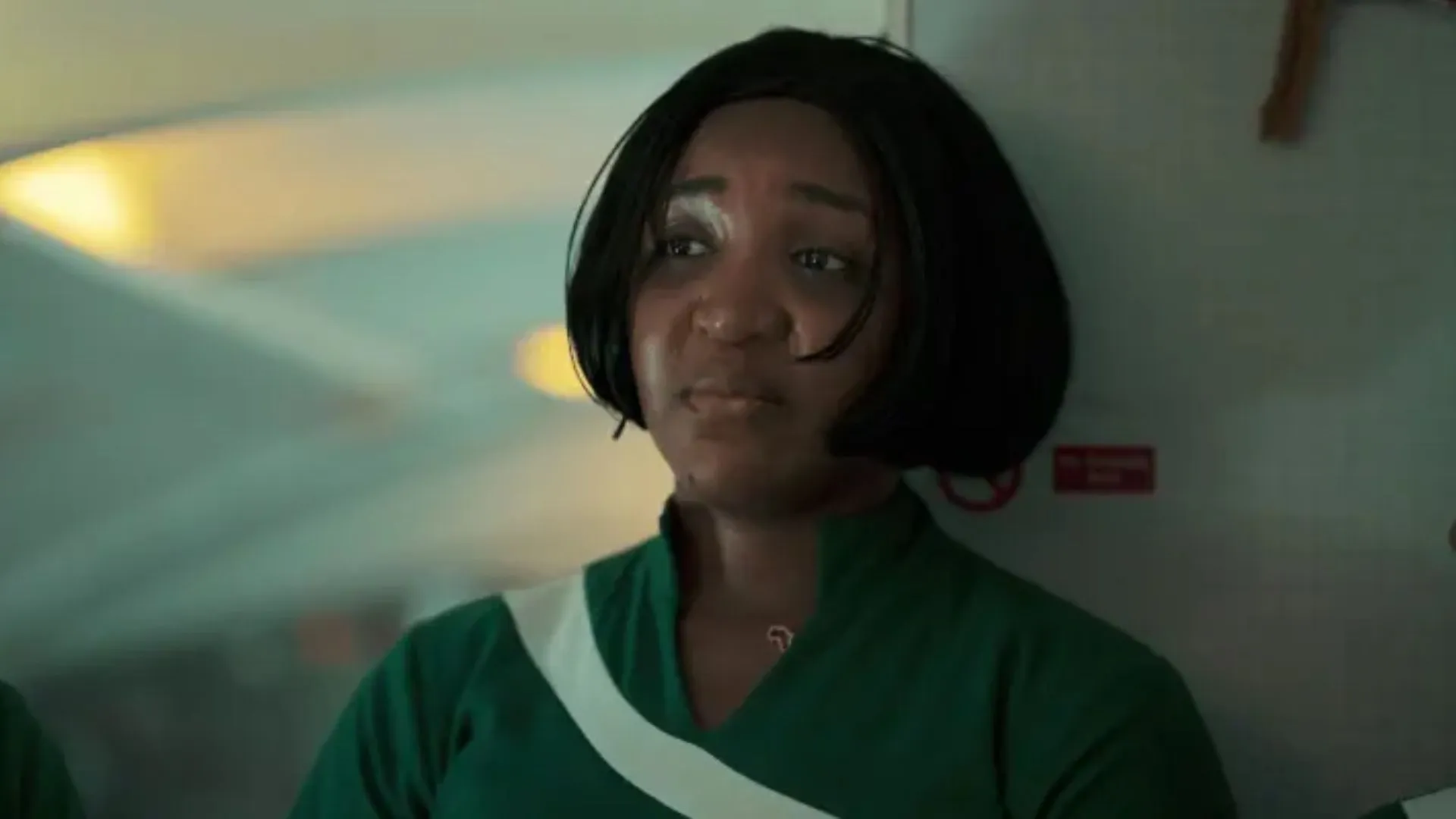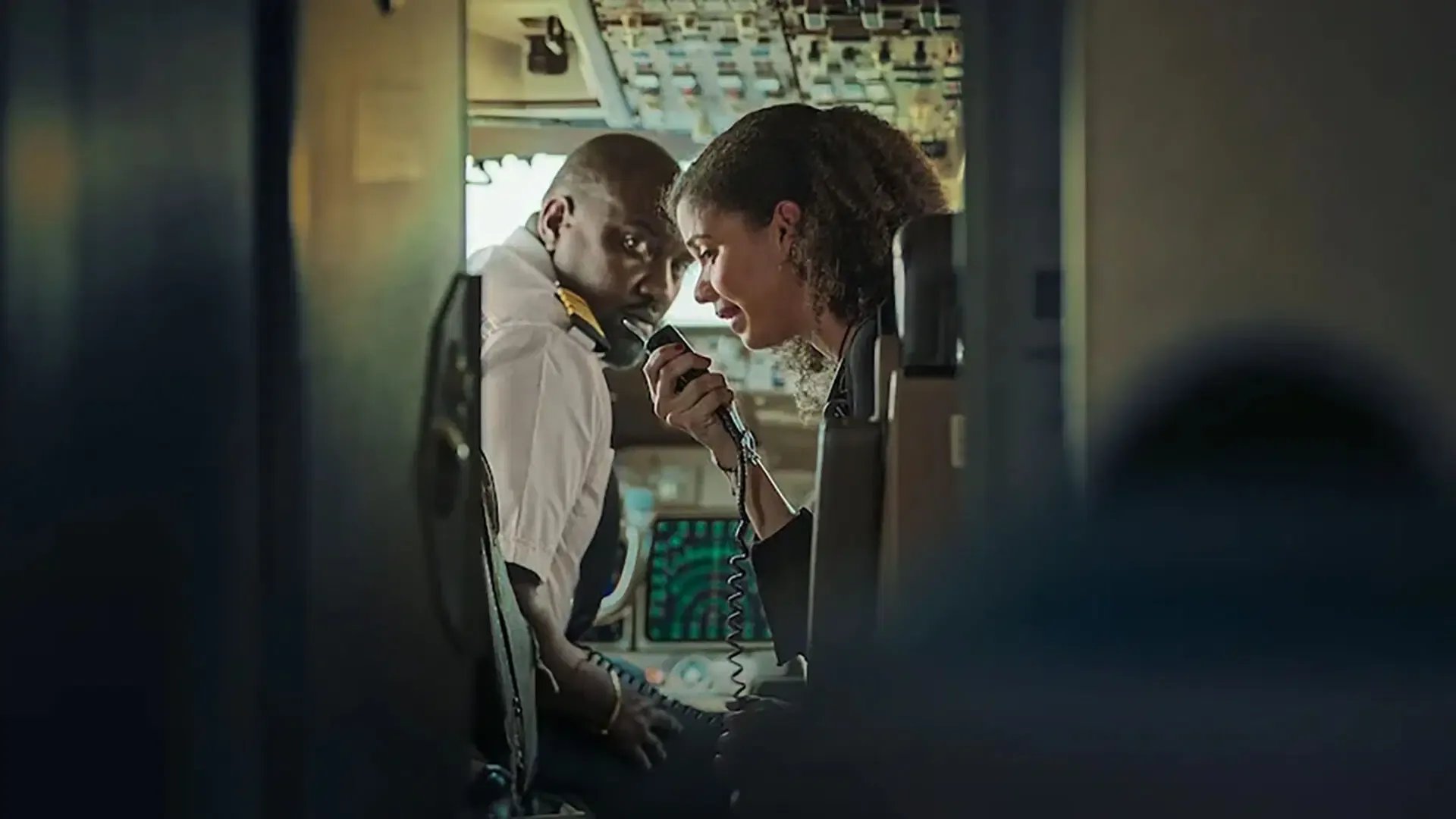In the politically volatile landscape of 1990s Nigeria, “Hijack ’93” unfolds as a theatrical retelling of a real-life aerial standoff that garnered national attention. The film revolves around four young Nigerian men who hijack a Nigerian Airways flight from Lagos, transforming an everyday journey into a high-stakes political statement against military government.
These young hijackers, driven by a great desire for democratic change, board the plane with a bold plan: push the aircraft to Germany while demanding the reinstatement of the democratically elected president. Their objective, led by a mystery individual known only as the “Teacher,” soon escalates from a deliberate protest to a chaotic and unpredictable conflict.
When the plane is forced to land in Niger, the hijacking turns into a tense three-day international crisis. With limited gasoline, rising tensions, and increasing desperation, the young men find themselves caught between their revolutionary goals and the harsh realities of their circumstances. Their initial aim of political reform begins to unravel, revealing each hijacker’s deep motivations and internal difficulties.
At its core, the film examines the fine line between political activism and terrorism, demonstrating how youthful idealism may intersect with structural tyranny. Set against Nigeria’s chaotic political landscape under military control, “Hijack ’93” offers a challenging analysis of revolt, sacrifice, and the human cost of achieving social change.
The narrative depicts the confined situation onboard the hijacked plane, where passengers and hijackers are caught in a psychological and physical standoff, each group fighting for survival.
Crafting Chaos: Narrative Architecture of Rebellion
Robert Peters approaches “Hijack ’93” with the director’s strong eye for transforming historical tension into cinematic drama. His directing technique grapples with the intricate dynamics of a hijacking scenario, creating a pressure cooker environment fraught with unpredictability. Peters recognizes that true suspense isn’t just about exterior war, but also about internal divisions inside a group bound together by a desperate purpose.
The film’s visual language conveys the claustrophobic aspect of the hijacking. Peters expertly limits the camera within the aircraft’s small confines, making every movement and whispered discussion feel charged with potential energy. He moves the ensemble cast with surgical precision, giving each performance moments of vulnerability that shatter the characters’ revolutionary mask.
Musa Jeffery, the screenplay architect David takes severe liberties with the historical narrative. His writing is not a dry documentary but a psychological study of young radicals torn between ideological fire and personal frailty. David transforms the hijackers from potential terrorists to complicated human beings grappling with systemic injustice by instilling symbolic aliases and intensely emotional backstories.
Political tension is evident in the conversation. Characters do more than just speak; they declaim manifestos, question power structures, and disclose internal tensions. David’s screenplay recognizes that revolutionary movements are never homogenous; they are chaotic and conflicting, driven by individual traumas and collective dreams.
The script’s combination of factual bones and fictional flesh is very compelling. The hijackers are not one-dimensional radicals, but rather complex individuals whose personal history interact with larger political storylines. Each character represents a microcosm of Nigeria’s complex political landscape: young, frustrated, and certain that bold action is the only way to achieve significant change.
Peters and David cooperate to construct a narrative that is both a political thriller and a character study. The hijacking serves as a pressure point to reveal deeper societal flaws.
Hijacked Humanity: Portraits of Rebellion
At the center of “Hijack ’93” are four young men whose desperation turns into a loud political statement. Omar, Dayo, Ben, and Kayode are more than just hijackers; they are living, breathing examples of a generation’s dissatisfaction with military oppression.
Ben emerges as the most volatile character, a revolutionary powerhouse. With his unpredictable acts, he’s the team member most likely to sabotage the entire mission, and he’s played with intense commitment. His decision to put gasoline on the plane demonstrates his extreme attitude and the mission’s inherent fragility.
Kayode symbolizes the mission’s philosophical spirit. He expresses their conflict with terms that sound like they were ripped from revolutionary manifestos: “It will take evil to defeat a greater evil.” His character development illustrates the psychological toll of radicalization, demonstrating how ideological enthusiasm can erode over time when confronted with real-world complexity.
Nancy Isime gives the film’s most nuanced portrayal as Iyabo, a passenger dragged into the hijackers’ world as a reluctant translator. She serves as the narrative’s moral compass, questioning the hijackers’ rhetoric and exposing the fragility of their revolutionary ambitions.
Lee Zhang, the son of the Chinese ambassador, complicates international relations even further. His participation transforms the hijacking from a local political protest to a potential worldwide issue, increasing the stakes of the narrative.
The actors who play the hijackers face a difficult challenge: they must make these characters both menacing and sympathetic. When they begin to question their objective, the performances reveal the human weakness underneath their revolutionary façade.
Adam Garba and Allison Emmanuel excel at expressing their characters’ internal cracks. Their performances indicate that these young guys are less hardened terrorists and more perplexed individuals trapped in a system that offers no viable path for change.
The cast transforms what could have been a simple thriller into a sophisticated examination of adolescent radicalization, political desperation, and the fine line between activism and violence.
Pressure Point: When Idealism Meets Reality
“Hijack ’93” delves into the volatile psychology of young radicalization, providing a detailed examination of how ideological passion may change ordinary people into potential revolutionaries. The film shows more than just young men with weapons; it also illustrates the sophisticated mental machinery that drives their desperate political declaration.
The enigmatic “Teacher” transforms these young guys from disillusioned citizens into potential change agents as the radicalization process unfolds. His inflammatory rhetoric: “Are you ready to fight?” “Are you ready to give your life for change?” – addresses a generation suffocating under military oppression. Each hijacker has personal traumas that make revolutionary action seem the only possible option.
As the hijacking progresses, internal fractures become more apparent. Kayode best represents this internal tension, fluctuating between revolutionary rhetoric and rising self-doubt. His statement “It will take evil to defeat a greater evil” progressively loses its revolutionary luster as the mission’s futility becomes clear.
Ben symbolizes the mission’s most volatile ingredient. His decision to use gasoline in the aircraft demonstrates radical dedication and potential self-destruction. The character becomes a walking symbol of how revolutionary passion can soon devolve into uncontrollable chaos.
The film’s suspense is based on the psychological pressure cooker within the aircraft rather than traditional action sequences. Unexpected moments, like a passenger going into labor or the arrival of a diplomatic VIP, heighten the tension, transforming the hijacking from a political statement to a human drama.
Finally, “Hijack ’93” examines a basic question: What happens when idealistic young people face the tragic disparity between their revolutionary ambitions and hard political realities? The answer is revealed not via huge lectures, but through little, tragic instances of human vulnerability.
Navigating Truth: Reimagining Historical Turbulence
“Hijack ’93” is a bold reconstruction of a watershed moment in Nigerian political history, balancing factual data and dramatic interpretation. The film depicts the combustible political landscape 1993, a year marked by military authority and fierce democratic resistance.
The era’s Nigerian military rule becomes more than just a backdrop; it is a suffocating presence that fuels the hijackers’ radical deeds. By framing the hijacking as a desperate scream against structural oppression, the film highlights a generation’s great disillusionment with democratic representation.
Surprisingly, the film takes substantial creative liberties with the real incident. The real-life hijackers were teenagers, but the film portrays them as young adults with more complex political understanding. This shift allows for more in-depth psychological examination but also separates the narrative from rigorous historical authenticity.
The film’s most intriguing variation is its portrayal of the hijackers’ motives. While the characters are based on true political tensions 1993, they reflect an exaggerated interpretation of revolutionary sentiments. Their demand for the Nigerian government to resign becomes a strong symbolic act, if historically simplistic.
Production characteristics suggest a deliberate effort to maintain period accuracy. The visual representation of the differences between Nigerian and Nigerien landscapes reveals a subtle approach to cultural representation, even if the 1993 context isn’t always evident.
Perhaps most compelling is how the film transforms a historical episode into a broader reflection on political opposition. By emphasizing emotional truth above literal accuracy, “Hijack ’93” allows audiences to comprehend the interpersonal dynamics underlying political upheaval.
The narrative eventually implies that historical events are not just about facts but also about the complex, contradictory, and highly personal human stories underlying those facts.
Framing Tension: Visual Storytelling of Crisis
“Hijack ’93” transforms an aircraft’s restricted environment into a pressure cooker of human emotion, using photography that translates physical confinement into psychological drama. The camera work heightens the claustrophobic mood, keeping viewers within the hijacked plane’s short passageways and cramped sitting rows.
Lighting becomes a narrative instrument, alternating between intense fluorescent glares and gloomy moments that highlight the characters’ interior tension. Each frame feels precisely designed to portray the passengers’ and hijackers’ escalating psychological instability.
The clothing design is understated yet realistic, perfectly capturing the Nigerian look of the early 1990s. Characters dress in attire that is appropriate for the period, avoiding the costume drama pitfall of appearing overtly old. Military uniforms, passenger clothing, and crew costumes convey societal structures and individual characteristics.
Multilingual interactions bring incredible dimension to the storytelling. The French-speaking Nigerien setting adds to the tension, emphasizing the hijacking’s worldwide scope. Dialogue shifts between languages become mini-dramatic moments, revealing power relations and cultural miscommunications.
Sound design works overtime, transforming everyday aircraft noises into potential threat signs. The hum of engines, passenger murmurs, and sudden bursts of chatter create an audio world as tense as the visual.
The most striking aspect is how the production crew transforms a normally static site – an airplane – into a dynamic psychological landscape in which every square inch is filled with potential conflict.
The visual storytelling does more than just capture the hijacking; it lets viewers feel confined alongside the characters, transforming a historical event into an immersive sensory experience.
Turbulent Trajectories: Narrative Momentum
“Hijack ’93” unfolds like a pressure valve slowly twisted, gradually building narrative tension rather than erupting in traditional dramatic moments. The film’s structure parallels the hijacking itself, with a gradual, unpredictable plunge into uncertainty that puts viewers on edge at all times.
The first act moves at a steady, even methodical pace to introduce the hijackers. Each character’s past is revealed through subtle encounters that allude to deeper reasons, rather than prolonged exposition. This method transforms potential narrative drag into psychological fascination.
Rising action turns into a masterclass in prolonged tension. As the plane approaches Niger, the narrative transforms from a simple hijacking to a sophisticated diplomatic chess play. Moments of potential violence are continually anticipated but skillfully delayed, creating a sense of ongoing menace.
Internal character struggles, rather than standard action sequences, produce structural peaks. A passenger going into labor, diplomatic concerns, and the hijackers’ escalating internal differences serve as pivot points to keep the narrative moment moving.
The climax avoids Hollywood-style resolution, instead sophisticatedly examining revolutionary failure. Instead of delivering a definitive conclusion, the film leaves viewers with unanswered questions regarding political opposition and human agency.
Some viewers may find the resolution’s subtlety difficult to understand. The narrative offers a more introspective finale that represents the complex reality of political upheaval rather than the traditional dramatic catharsis.
Finally, the film’s tempo becomes its most powerful storytelling device, transforming a potential historical reenactment into a highly psychological trip through political desperation.
The Review
Hijack '93
"Hijack '93" emerges as a sophisticated, thought-provoking examination of political desperation that goes beyond conventional hijacking storylines. The film offers a complex psychological depiction of the revolutionary drive by transforming a historical episode into a profound reflection on teenage radicalization and systematic oppression. The film's strength comes from its refusal to simplify complex political realities. Rather than presenting easy heroes or villains, it highlights the human complexity that underpins political resistance. The narrative is elevated above standard thriller clichés thanks to powerful performances, particularly from the key actors portraying the hijackers. While the tempo may surprise viewers expecting traditional action sequences, the film's patient approach allows for more emotional and philosophical engagement. The hijacked aircraft's confined atmosphere serves as a metaphorical pressure cooker for examining larger issues of political dissatisfaction and generational conflict. Cinematographic choices and authentic period elements add to the narrative's authenticity, making the viewing experience both intellectually interesting and emotionally impactful.
PROS
- Nuanced portrayal of political radicalization
- Strong ensemble performances
- Authentic period representation
- Sophisticated narrative approach
- Compelling psychological depth
- Excellent cinematography
CONS
- Potentially slow narrative pacing
- Complex storyline might confuse casual viewers
- Lack of conventional dramatic resolution
- Historical liberties might disappoint history purists





















































